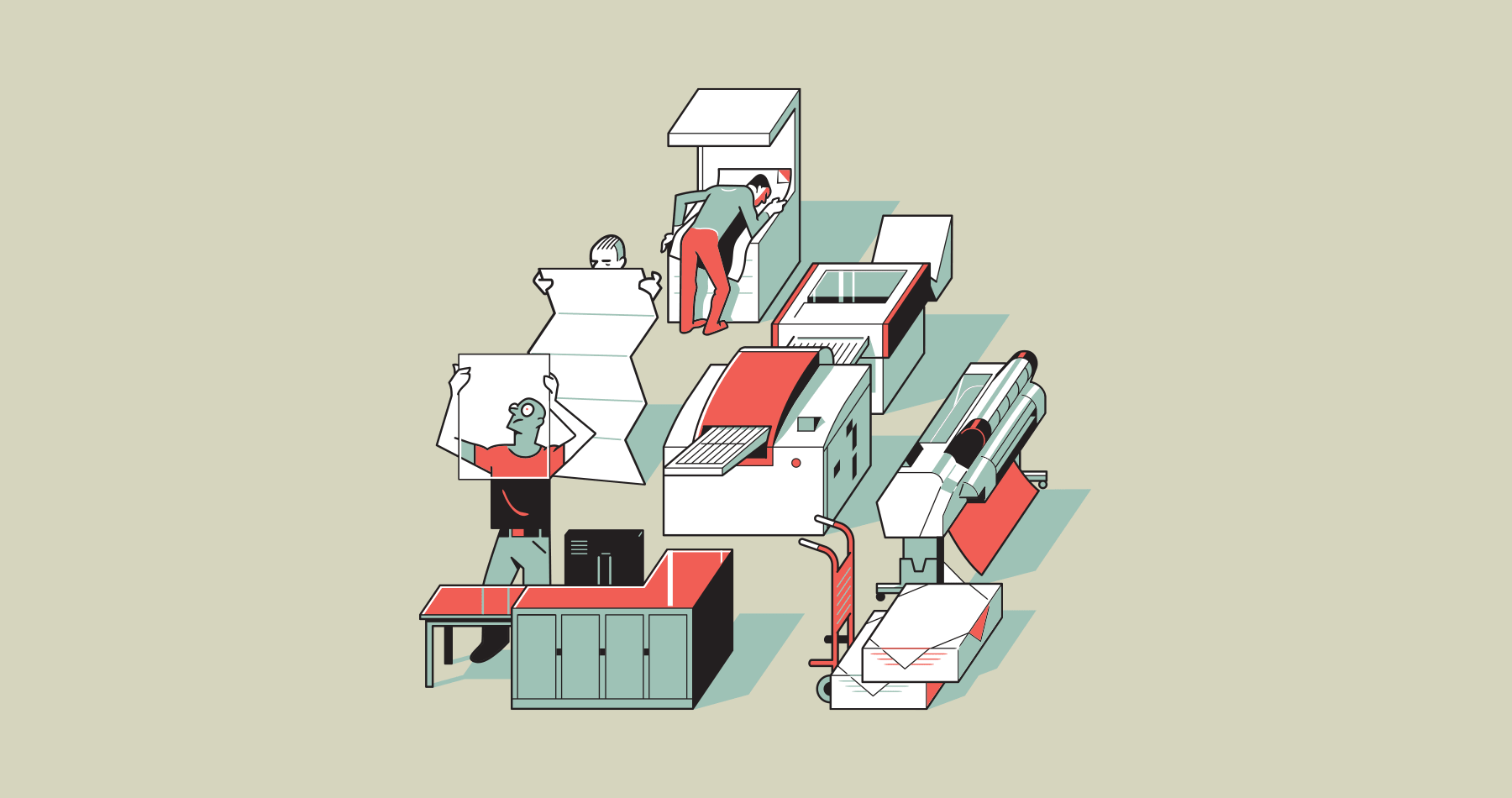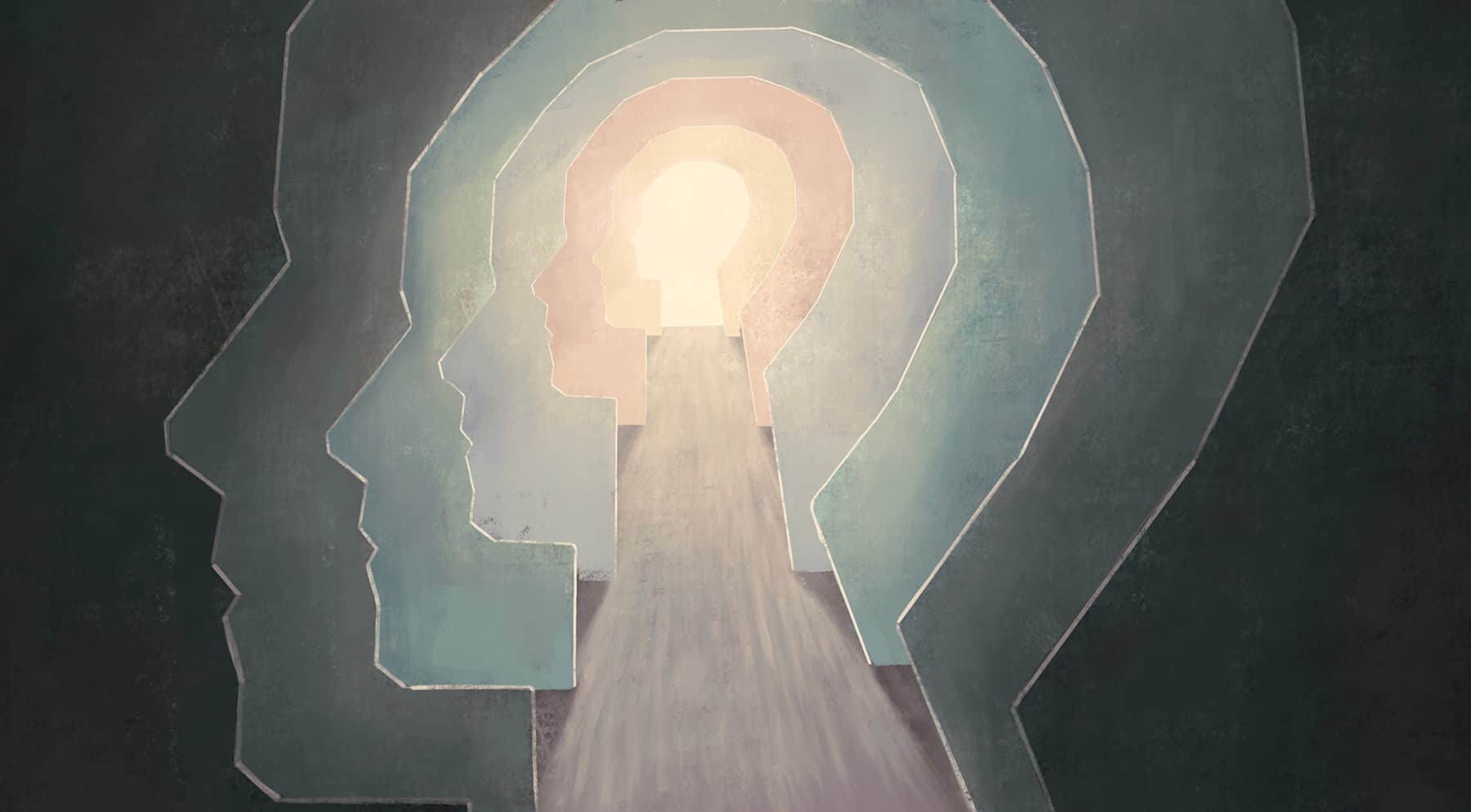There has always been a great love of print design among creatives. Over time, however, there are less people designing for print, which has led to a shortage of people who can do it well.
We sat down with Bart Caylor, President at Caylor Solutions in Indianapolis, Terri Price-Deep, Business Development Leader at Millcraft in Columbus, Ohio, and Monica Grier, Creative Director at The Quantum Group in Chicago to discuss the merits of print and why it matters in the current design landscape.
"Design, whether it's print or web, is understanding the boundaries and pushing the edges."
— Bart Caylor, President, Caylor Solutions
What are the biggest differences in designing for print and designing for web?
Caylor: With a background as a print designer myself, I made a switch to web very early in my career (first website in 1994). The challenge is understanding the dynamics of the medium: the strengths and challenges of each. Similar to print, there are both limitations and opportunities with interactive web design. Understanding what you can do is critical; just like understanding what the interaction between paper, inks, varnishes and other techniques is so vital to a print project. Design, whether it's print or web, is understanding the boundaries and pushing the edges..
Price-Deep: The biggest thing to consider when designing for print or web is how the audience will interact with your design. Keep in mind that printed material offers a more tactile and sensory experience, while digital is more about navigation and user experience.
Grier: Tangibility makes an impact. I love the touch and texture of a printed book, package, mailer. Research shows that we retain more information when we use more senses vs. visual only. By touching a piece, we are literally and mentally connecting with it, and we remember it.
What does it mean that the vehicle (paper) becomes part of the message?
Caylor: We are limited in the vehicle in any design project. Whether print (paper), screen (web/video), or experience, we are limited by the boundaries that the vehicle and medium provide. We have to push to the edge. The greatest designs have always been done within limitations.
Price-Deep: This is one of my favorite topics. My philosophy is that choosing the right paper is part of the design process. As an example: If you are selling chrome furniture or guitars, you might want to use a coated paper to have the chrome pop more on the sheet and emulate the look of the actual product. Jewelry is another example which is typically printed on coated sheets to capture the shine of the gems or metals.
But if you are printing a sustainability report, you might choose softer photography and go with a more natural uncoated sheet, or even a slightly textured or recycled fiber paper to evoke the feel of the earth. Using textures to match the imagery is a smart way to help convey your message or create a mood. You can create texture by choosing a textured paper stock or using specialty print techniques. Many times a piece of mail that’s touch is so unique is opened it first or saved it a bit longer.
Caylor: I think a well-planned printed piece enables us to retain the information. I’ve saved beautiful pieces over the years, just because I love the substrate they are printed on. Seeing my work on a mailer, truck, billboard, an ad, is very gratifying.
How has the relationship between graphic artists and print changed over the past few years?
Caylor: When print was the primary way of communicating marketing messages, designers and graphic artists were more familiar and intimate in understanding all the aspects of what could be possible. With the introduction of so many other forms of communication (web, social media, animation, interactive, video, etc.) designers have had to become more diverse, which often makes one a "Jack of all trades" rather than a master of one. We are all becoming more art directors than true designers and graphic artists.
Price-Deep: Prior to Covid-19, we started to see renewed interest in printed materials as the younger generations found it more authentic than the digital medias which they have been bombarded with all their lives. In the last year with supply chain challenges, print has seen a decline due to necessity. People tend to trust print. How many times have you heard we need to get that in writing? That’s not typically an electronic transaction.
"People tend to trust the printed word versus an email messaging. People react differently with print."
— Terri Price-Deep, Business Development Leader, Millcraft
Grier: Unfortunately, Covid has forced more digital design, and less print, due to paper shortages, budgets, staff, art departments reduced or furloughed. As printers, we’re "holding the hands" or mentoring those people remaining, as they may not be trained in what is required for a successful print project. The alltime favorite printers’ mantra: Print is not dead.
What are some symptoms that come from “digital fatigue?"
Caylor: Going to the same wells for inspiration. Limiting our experimental nature. Staying in the safe areas. Designers need to understand how to better jump between the mediums and understand more tools like QR codes, NFTs, and other technology that can span between print and digital.
Price-Deep: Our brains tend to work harder in virtual interactions. We become hyper-focused and overstimulated. It’s harder to find a central focus and we are often distracted by faulty audio and video. Since early last year, studies show that people are logging off more, leaving social media in some cases, and returning to print books for a relief from the constant screen time.
Maybe I’m biased being in the paper industry, but I often sigh when restaurants have a QR code menu. I long to put my phone away at mealtime and enjoy my friends and family. Visual noise, as well as long exposure to screen time, can contribute to lower back pain, eye strain and fatigue.
Grier: We are inundated and it’s exhausting! Fast and convenient isn’t always better. It has compressed our attention spans, compromised our imagination, and decimated our thought processing. I am an avid reader, and enjoy an intriguing mystery or historical fiction, and who doesn’t love a dishy beach read? Our imagination and inspiration kicks into gear when we read the words (on paper!) or see a masterpiece at an art gallery (in person!). Our brains need to solve problems, get fully immersed in the message, to fully appreciate the writer’s/artist’s craft.
Why are print campaigns so effective?
Caylor: They have what I like to call the "kitchen counter" effect. Digital, by nature, lives in the ether. Print is a physical object that takes up space in the world. If a print piece is designed with value and quality, there is a natural inclination to hold on to it, give it more room to explore, discover, and return to. That is the power of print.
Price-Deep: Number one, print lasts longer. People tend to trust the printed word vs. email messaging. People react differently with print. It’s more tangible and is less likely to be skimmed like digital messaging. Studies show that children learn better from books, and information retention is stronger. Direct mail, for example, has a higher open rate than email or other online interaction. People appreciate direct mail from brands they buy. The more it’s personalized, the higher the response rate.
Grier: It takes 6-11 touches to get a response. Repetition is effective, but a good design, printed on paper—especially if it’s personalized—will prompt the recipient to take pause, consider the offer/message, do their research, and ultimately take action.
Finally, there seems to be a gap with educating designers on print. What advice do you have to close that gap?
Caylor: Back to training designers more on the technology and what is available. In my training, I was encouraged to start with sketches and pencil drawings before starting on digital designs using the computer. I still think those basics are important, but we also need to understand the technology and how it can apply to the physical world elements. This will continue to be critical as tools like the metaverse gain more attention, and design has the risk of being commoditized with the tools like Adobe Express and Cava. Designers have to understand more than just how to create compelling design. They have to hone their craft to create emotion and tell stories through content. Design is a language for that.
"By touching a piece, we are literally and mentally connecting with it, and we remember it."
— Monica Grier, Creative Director, The Quantum Group
Price-Deep: I think the challenge is that print technology evolves so rapidly. It’s one thing to teach designers to design for traditional print, but to design for all the various types of printing processes can be overwhelming. For example, layouts for a sheet-fed printing project are very different from designing for packaging or wide-format printing. There’s a lot to know. Designers should get the basics in school but be willing to spend time with printers and learn the nuances of the various print techniques available to them. I have often thought printers should hold workshops to help customers navigate how to build the best files for their equipment platforms. Doing this would also generate some interest in techniques that a designer may not have realized are available to them.
Grier: I believe every designer should be educated in prepress. (Latest software, font management, color separations, trapping, proofing, CMYK, vector art creation, etc.) as part of their design degree, internship, career. I spent several years at a prepress house. What a plethora of information! By understanding the mechanics of the printing process, I successfully create clean and properly assembled files for the production end.
Other recent articles

The Vanishing

Weighing In

We’re OK

The Guide

By The Numbers

